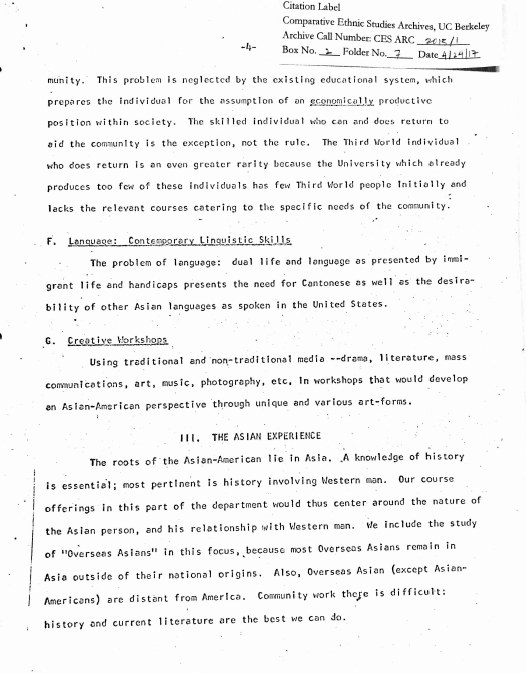Evolved into Asian American and Asian Diaspora Studies, the Asian Studies program was envisioned as not only understanding the Asian American experience but the diaspora of their communities, both in the United States and abroad, and their homelands, many of which had a shared narrative of imperialism and colonialism. The Asian Studies program sought to provide the tools and frameworks for students to be in and work with the community, including contemporary language skills that would provide languages courses to help guide this work, especially since “dual life and language as presented by immigrant life and handicaps presents the need.”
It is notable to understand how the premise of Asian Studies remains important, however, that in the moment of this envisioning of the program, that the demographics of the Asian American community were different. While the Asian Studies program in 1969 was envisioned to encompass the narratives of mainly the Chinese, Japanese, Korean, and Pilipinx* experience, this now only represents a tiny fraction of the umbrella, dictating a need for courses addressing the experience of South Asian and Southeast Asian people.
* The use of “P” instead of “F” is due to the “F” not existing in the native language of the Philippines prior to Spanish colonization. Using the “P” is a form for decolonization and reclamation of identity. In regards to the use of “Pilipinx” rather than “Pilipino/a,” the usage is gender neutral and does not adhere to the binary unlike the latter.
